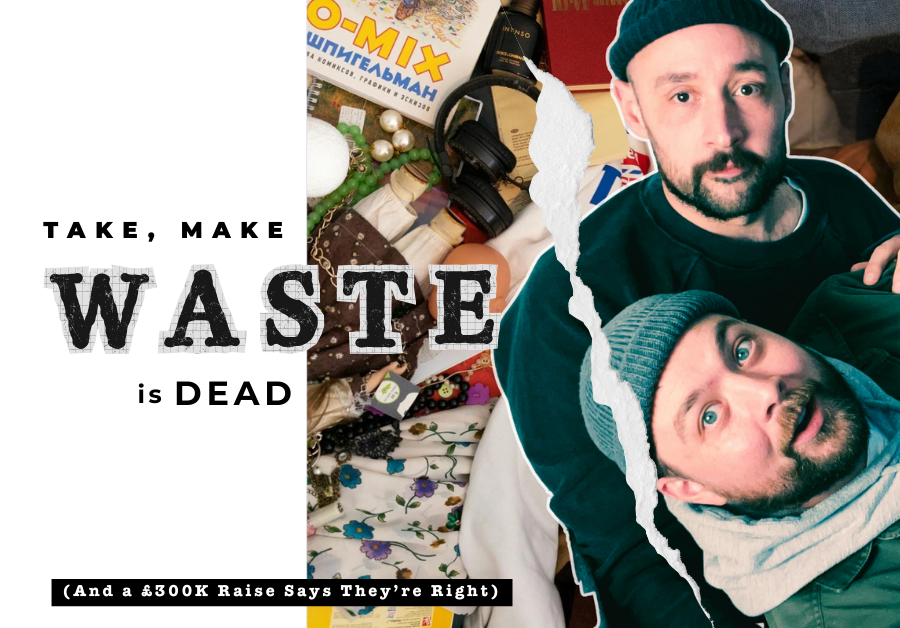Finding funding for your startup is exciting. Getting the right investor involved could be the trigger for years of growth and expansion.
But securing business funding isn’t without its risks and making the wrong choice could come back to haunt you in future funding rounds.
Give away too much equity too early and you may struggle to get more investors on board. And signing up for high-interest loans could fatally impact your cash flow.
That’s why we’ve created a complete guide to all of the funding available to UK businesses and startups.
It lists all funding types, including:
💰 Government schemes
💰 Crowdfunding
💰 Debt financing
💰 Equity funding
💰 Other sources
Crowdfunding
Crowdfunding has become popular over the last decade, mainly thanks to platforms like Seedrs and Crowdcube.
These platforms have grown in popularity, and they can help entrepreneurs with small businesses raise funding rounds.
There are two main types of crowdfunding:
- Rewards: This is where businesses offer investors discounts, an early release or other exclusive perks in exchange for funding. Kickstarter is a good example of a rewards-based crowdfunding platform.

- Equity: You offer supporters equity in your business or project. Seedrs is a good example of an equity-based crowdfunding platform.

While rewards crowdfunding is good for creative industries, equity crowdfunding is more suitable for commercial ventures.
Equity Funding
These funding options involve giving away equity in your company to investors. This kind of funding often comes with business mentoring or support.
We’ve included accelerators and incubators here, even though they don’t always require a share in your startup’s equity.
Angel investors
This is when one or more individuals invest their own money in an early-stage business.
If you are unable to find an angel investor through your personal and professional networks , online platforms like AngelList specialise in connecting startups with angels.
To see more, check out Growth Business’s list of 20 angel networks.

Venture capital (VC)
Venture capital firms are companies that source funding from wealthy individuals, family offices and banks and use it to invest in startups.
They are the largest source of funding for early-stage startups in the UK.
VC firms usually invest in businesses that are already making revenue and have a clear path to scale.
It is unusual for them to invest a pre-seed product or company. Startups at this stage are more likely to get funding through friends and family or angel investors.
You need to pitch to VC firms. Check out this guide on how to write and deliver a great pitch to a number of venture capitalists.
Crunchbase is a good place to explore different VC firms and see what they have invested in recently, and how much. To access the data fully you’ll need to pay a membership fee.
Accelerators
Accelerator programmes are backed by VC and private investment firms. They provide education, mentoring and finance options through networks of partner organisations.
They aim to help startups grow quicker and are particularly popular with tech entrepreneurs.
Details of which companies have been funded by accelerator programmes can also be found on Crunchbase.
A good example of an accelerator is Seedcamp. It currently supports over 440 startups and has helped raise $7 billion in funding.
Its network provides a range of support services to startups, from communications to sustainability and HR.

Incubators
Incubators help new and early-stage startups to grow by providing them with office space, services and mentorship in exchange for a small amount of equity.
The main difference between an incubator and an accelerator is that there is less focus on funding. Startups in an incubator will still get funding options, but the incubator itself rarely provides funding.
Hatch is a good example of an incubator. It helps under-represented entrepreneurs from across the UK to imagine, launch and grow businesses that are sustainable, successful and have a positive and lasting impact on their communities.

Sweat equity
Another type of equity investment is “sweat equity.” In startups and small businesses, this term often comes up when co-founders contribute to the business not necessarily through financial capital but rather through their efforts and skills. For example, a co-founder may spend countless hours developing a business plan, building a product, or creating a marketing strategy, all without initial monetary compensation.
This idea originates from the real estate industry and refers to the work done by an owner to improve the value of an investment property before selling it.
Sweat equity works by issuing shares in an early-stage business to founders and employees as compensation for their work. This type of funding is great because it can help business growth without requiring a significant cash investment.
The Seed Enterprise Investment Scheme (SEIS)
The UK government offers four schemes designed to help SMEs and social enterprises to grow by attracting investment. They do this by offering tax advantages to investors.
SEIS is the most relevant one for startups. It is aimed at businesses less than two years old with fewer than 25 employees.
Companies must:
- Be permanently UK-based
- Plan to spend the money on certain qualifying trades
- Not be listed on a recognised stock exchange at the time of investment
- Not be controlled by another company
Before applying to the scheme, businesses should get SEIS Advance Assurance from HMRC.
This is a declaration from HMRC confirming that you will qualify for SEIS. If you don’t, then investors will have to put money into your business without knowing whether they will get the tax advantage.
Other Sources
If it’s early days and you can’t get funding or access unsecured business loans then it’s time to either ask friends or earn the money yourself.
The main aim at this stage of your startup is to make it ‘ramen profitable’, in other words making enough money so that you can cover your bills and focus on the business.
Personal connections
In other words, this means borrowing money from friends and family. This is a great option for entrepreneurs with no previous experience in launching a successful business.
Plus you don’t need to go through a formal lending process, which means you can agree on flexible repayment terms.
There are a couple of downsides though:
👎It only works if you know someone with enough cash and who is willing to lend it to you.
👎It can damage relationships if the business doesn’t make money.
Consulting
If you’re starting your own business then the chances are that you have a skill that others will be willing to pay for—and this can be a great source of funding for your startup.
Say for example, that you’ve worked in marketing but now you have launched your own startup by importing specialty coffee.
By working part-time as a freelance marketing consultant you will have a source of funding for your new business.
As the new business grows, you can gradually scale back your consulting work.
Side hustles
If your startup needs funding and isn’t making revenue yet then consider finding other, more immediate ways to make money.
These could be as simple as driving a taxi in your spare time.
Or you could try something more creative. A famous example is when Airbnb created a cereal brand.
The company’s founders were struggling to find funding. They had put their own money into it, racking up a tone of personal debt along the way.
They came up with the idea of selling novelty cereal boxes for $40 each. The idea not only helped to fund the company, but it also got them a lot of media attention. It also impressed accelerator Y Combinator, who eventually agreed to fund the company.
Government
Government funding and relief schemes tend to be for latter-stage companies with revenue—although R&D tax credits can be applied for even if your business is loss-making.
There are hundreds of schemes available from the government.
We’ve divided them into three main categories:
- Tax relief
- Funding and grants
- Loans
Here are some of them.
Tax relief
R&D tax credits
R&D tax credits provide financial incentives to businesses that perform research and development.
To qualify, your business must be liable for corporation tax and do work that fulfils the government’s R&D criteria. Companies from any industry can apply—not just science and technology.
There are two types of R&D tax credit schemes. Let’s take a closer look at each of them.
🏪 Small and medium-sized enterprises (SME) R&D Relief:
- Available to businesses with fewer than 500 employees and a turnover of fewer than 100 million euros or a balance under 86 million euros.
- Allows companies to deduct an extra 130% of their qualifying costs from their yearly profit, as well as the normal 100%.
- Businesses can claim a 14.5% tax credit if the company makes a loss.
🏬 Research and development expenditure credit
- For “large companies”—presumably those with over 500 employees and a turnover of over 100 million euros.
- Allows companies to claim back 13% of their R&D expenditure.
R&D tax credits are one of the best government funding options on this list—assuming that your business qualifies.
This is because:
✅It allows you to quickly develop new products and services.
✅No need to share company equity.
✅More accessible than other forms of funding.
✅Short turnaround time.
✅You can claim for R&D already performed up to three years ago.
To apply for a small business grant, visit the government’s R&D tax credits page. You’ll need to:
- Calculate your claim
- Write your technical narrative
- Fill in and send a CT600 form
Some companies support this process. They are expensive but can be useful for complicated claims.
Creative industries tax relief
Companies that work in artistic industries may qualify for creative industries tax relief.
These businesses can get up to 20% of their costs refunded as tax credits or as cash.
The year ending March 2022 saw the government pay a total of £1.05 billion in tax relief across all creative industries.
Creative industries’ tax relief applies to eight different fields. These are:
🕹️Video games
📽️Films
📺High-end television
🧒Children’s television
🐭Animation television
💃Theatrical productions
🎺Orchestral concerts
🏺Museum or gallery exhibitions
The tax works slightly differently for each field, so it’s important to look up the scheme that applies to you.
Example: Animation
Animation is a fairly typical example of one of these fields. It states that established businesses can claim the relief if:
- The programme is certified as “British” by the British Film Institute
- The programme is intended for broadcast, including streaming online
- At least 51% of costs relating to pre-production, principal photography and post-production involve animation
- At least 10% of these costs relate to activities in the UK
Your company must be responsible for:
- Pre-production
- Principal photography
- Post-production
- Delivery of the completed programme
Your company must also:
- Be engaged in planning and decision-making.
- Directly negotiate, contract and pay for rights, goods and services.
Animation programmes commissioned together are treated as one programme. This is different to some other creative industries’ tax reliefs, where each production needs to be applied for as a different programme.
Creative industries tax relief can be claimed back via your tax return. You need to provide supporting evidence of your claim. You also need to include details of your production, along with information about its costs.
Patent Box
This scheme reduces the cost of getting a patent by reducing corporation tax to 10%.
It applies to all companies that:
- Hold or exclusively in-license a granted UK or European patent.
- Meet certain development and active ownership conditions.
This relief was reformed in 2016 due to several loopholes. As a result, it has become difficult to apply for and manage.
It has a fixed time limit that only applies to the profits made on a patent. This means that if companies implement the scheme too early then the fixed time limit means the relief scheme might miss its most profitable period.
Therefore, it’s a good idea to get professional advice if you are thinking of applying for this tax relief.
Visit the GOV.UK Patent Box webpage for more information on how to apply.
Grant Funding
Innovation grants
These startup business grants that aim to speed up innovation so that new products get to market quicker.
One of the best-known examples is Innovate UK’s Smart Grants. They provide funding of up to £25 million to innovative and original projects in any industry.
It’s important to check the strict eligibility criteria, as it can be difficult to tell if your business qualifies. To help you work this out, the government has published an eligibility tree:

The business grants application scheme is run as a competition, meaning that you may not be awarded the funding even if you qualify.
To apply, visit the application page on the government’s website.
Horizon Europe
Innovation funding schemes are one area where the UK continues to work closely with its European counterparts. Horizon Europe is the most well-known of these. It is a €95 billion research and innovation programme that supports science and technology development in the European Union.

UK companies have performed well in the programme and secured 13.5% of all funding in 2020—second only to Germany.
The fund offers two types of financial support:
- Investments between €0.5–15 million, with eligible costs reimbursed up to 70%.
- Individual grants of up to €2.5 million.
The programme also offers to coach and mentor businesses.
There are two routes for applying to Horizon Europe:
- Discuss your needs with an advisor for your sector. This approach requires you to enter into a consortium with other businesses.
- Individual companies can apply directly to the EIC Accelerator.
Future Fund: Breakthrough
Future Fund: Breakthrough is a £375 million scheme. It aims to improve investment in R&D-intensive UK companies that are experiencing high growth.
To acquire funding, businesses must be looking for at least £30 million and have at least 70% of funding already committed from private investors.
They also need to show that R&D accounts for 10% of all operational costs over the past three years, or 15% for one of the past three years.
To apply, your lead investor needs to fill out an online application form.
Loans
Innovate UK loans
Innovate UK also provides business loans of £100,000 to £2 million. The interest rate is 7.4% and the loans need to be repaid over 5–10 years.
However, the range of businesses and projects that qualify is limited, as Innovate UK loans are only for companies with fewer than 250 employees to fund projects at the commercialisation stage.
Innovate UK’s loans are also operated as competitions. Round 7 opens on 10 November 2022.
The application process is similar to that of the grants scheme.
Prince’s Trust Enterprise Programme
One of your best bets is to find small business grants like the Prince’s Trust Enterprise Programme. This programme provides resources, mentoring, marketing and loans to business owners aged 18–30.
Personal loans are provided via the Startup Loans Company. Applicants can borrow between £500 and £25,000 at a rate of 6.2% APR.
Loan applicants need to be 18 years old at the time of application and work fewer than 16 hours per week.
Loans are limited to one per business but each partner can apply, giving you a greater chance of being granted funding.
Companies supported by the Prince’s Trust Enterprise Programme are generally successful. 53% of businesses have traded beyond three years.
To apply, fill out a contact form on the Prince’s Trust website. The programme lasts 12 months. To get a startup loan you must first complete the Trust’s Explore Enterprise course.
Debt Financing
Debt financing is usually for larger, more established startups and is a good way to get finance without giving up equity.
The downsides are that it can be expensive and quite difficult to find an institution willing to lend to startups.
This section lists some of the finance available to startups.
Startup loans
This is a state-backed scheme that lends between £500 and £25,000 to businesses less than two years old. The loans need to be repaid over five years and the interest is low at 6%.
Because the scheme is aimed at startups, riskier businesses are much more likely to get approved than they would with high street banks and other traditional financial institutions.

To apply, visit the British Business Bank website and fill in the registration form. The application requirements are relatively simple and the British Business Bank website provides a lot of useful guidance.
P2P lending
This is where companies get finance from networks of small lenders. There is a lot of crossover between P2P lending and crowdfunding.
This kind of finance is usually applied for and delivered over P2P platforms.
A good example is Funding Circle. Companies can borrow between £10,000 and £500,000, with interest rates from 7.9% per year.

Again, this route isn’t really viable for early-stage businesses and startups.
Advance funding
Through advance funding from GrantTree, a start-up receives as much as 80% of its expected research and development (R&D) tax credits, Video Games Tax Relief (VGTR), or Innovate UK grants prior to the official awarding or end of the financial year.
This type of business loan can be particularly useful for startups and businesses that need immediate cash flow to fund operations, further research and development, or other business expenses.
Venture Funding
There is a growing market for startup and growth financing. This ranges from small angel investments to large institutional investors from the established business community.
Boost&Co is a good example of a lender that specialises in this kind of finance. They will lend up to £2 million in investment capital to companies that have a proven business model and high growth.
Final Word
There are numerous avenues for funding available to startups in the UK in 2023. These include traditional funding options such as bank loans, angel investors, venture capital, government grants, and crowdfunding platforms.
Equity-based crowdfunding and business incubators also present viable opportunities. However, an increasingly popular method is sweat equity. This model–which exchanges services for equity–is highly beneficial for cash-constrained startups aiming to grow rapidly.
For the right startups, MOHARA can provide sweat equity to help your startup build world-class technology 🚀
Why not get in touch and tell us about your idea and business plan to see if we would be a good fit as a partner?
Let’s be pioneers together!














